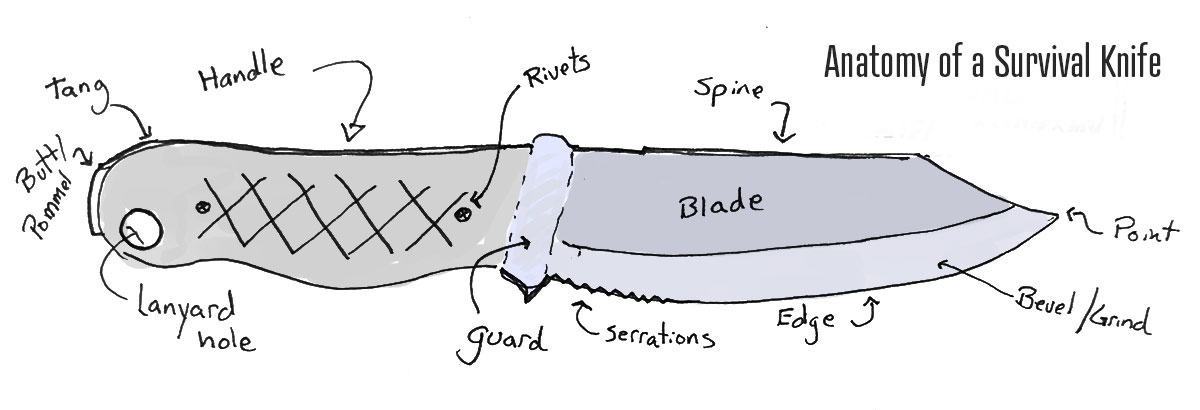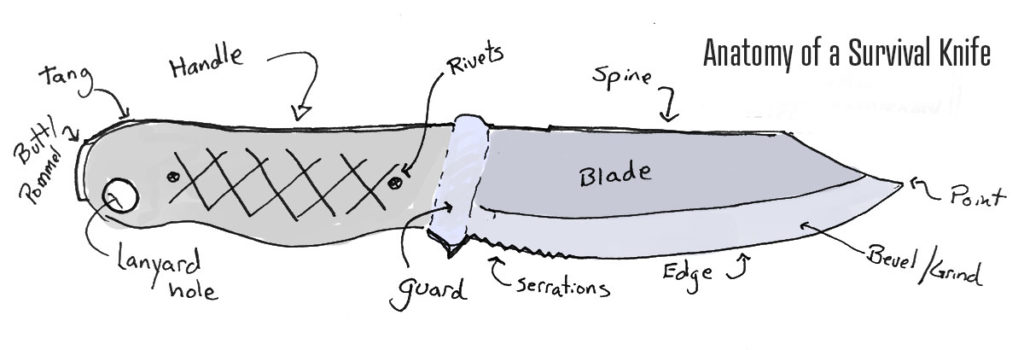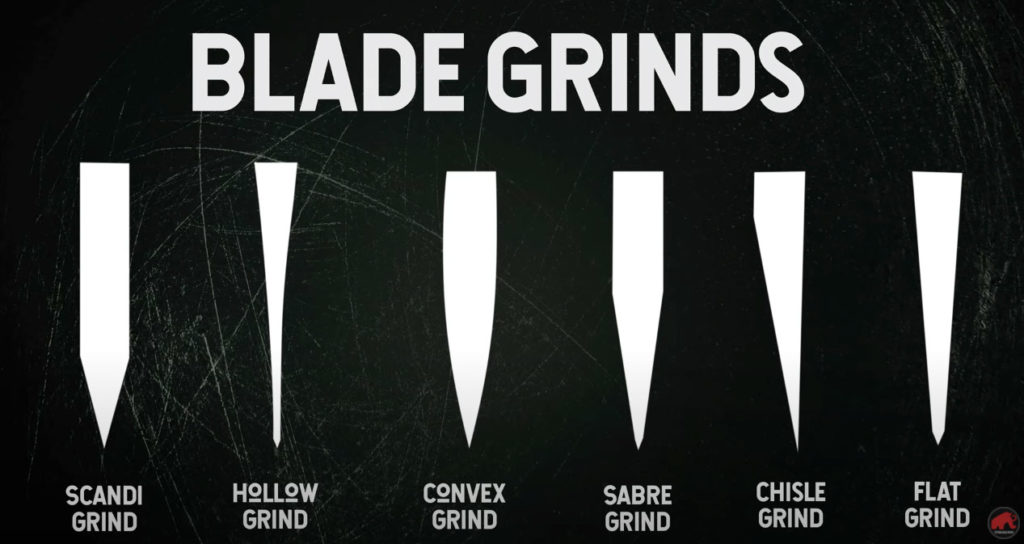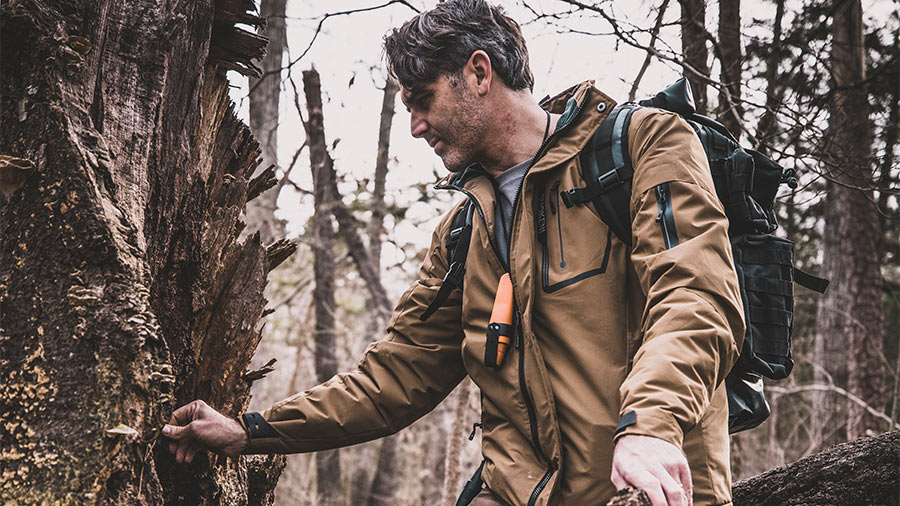What is the Best Survival / Bushcraft Knife

Different knives are used for different things. The steel, the edge, the size, and the shape are all designed for different purposes. Deep down you already know this, but you may not know the details. This page is meant to break down the the basic components of a survival knife or bushcraft knife. Let’s start with this broad overview video where I set up the main differences.
The makeup of a knife
I won’t spend long on this because, but let’s look at a typical looking knife and get to the most important bits. You have that metal part on one end. It’s usually sharp on one side (the cutting edge) and not sharp on the other (the spine). Clearly knives come in all shapes and sizes but listed below are a few of the main elements you will come across in survival knives.

Then you have the handle. Sometimes that handle is the same material. Sometimes it’s not. What is important though is how far the metal from the blade goes into the handle.
Full tang knives have the blade going all the way through the handle, and sometimes even extended out the back side. That gives a great pommel/butt on the end to hit stuff with. The handle is crafted around the outside of this and it makes the whole thing much stronger.
Survival experts like full-tang knives simply because it can take a lot more abuse and won’t break as easily in the field. That’s important if you’re stranded! But, the exact knife you have will depend on how you use it.
Ways to Use a Survival Knife
There are a lot of things you can do with a knife depending on what you have. A heavy duty knife could bust you out of a vehicle if you need it to (airplane pilots bring knives like this by the way). If you’re whittling a spoon, you probably want a thinner, sharper, and smaller knife. You can hack through a jungle with a bigger blade like a machete. Or, you can actually make your firewood with special techniques whereby you’re smashing the knife with a stick (batoning). You need a sturdy knife for this!
Types of Knife Blade Edges
The type of blade edge you have depends on how it is ground down. These are the most common edges.

Types of metal
There are different types of metal that knives are made of. Here are the advantages of each
Stone: Primitive knives and blades were always made from a sharp edge of rock. Flint and obsidian made for great blades in the stone age. We made a video here on finding blades from rocks.
Steel and Steel mixes: Most blades today are made out of some sort of steel or steel mixed with some other strengthening agent like carbon. What the blade is made of will depend on how easy it is to sharpen, how tough it is, how resistant it is to corrosion and how long is keeps and edge. No single metal is best at all of those, so you’re going to have to make a choice. What do you want. BladeHQ has a great overview of what to look for in blade steel.
How big of a knife do you need?
There is a tendency to want to buy a big knife when you’re first looking at survival knives. But, big knives are heavy. A good survival knife though can start at 3-4 inches of blade length and be all you need to survive. Larger knives might be good for cutting wood, but are more specialized. I’d recommend the sweet spot of 4-6 inches.
Where to carry your survival knife?
The key to carrying a knife is to have it accessible and easy to put away without hurting yourself. Some people wear it on a sling around their necks so that they can get to it (as seen in the photo below). This is also handy if you’re in winter gear and putting something around your waste is difficult to get to. Others wear it only on the hip. Either way, you’ll want a good sheath that holds the knife securely without it falling out.

So what is the best survival knife?
I’m going to be honest, there are lot of knives to choose from and everyone will have a favorite. I do however suggest a knife that his high carbon steel, a full tang blade, and comes with an easy to carry sheath. If you can find one with a sharpening stone or ferro-rod, that means you’ll have less accessories.
Here are my favorites:
- Morakniv Garberg – this is a great budget Bushcraft knife. It’s full tang, scandi grind and really sharp out of the box. It’s my current favorite.
- Selkirk Buck Knife: I love this stainless steel full tang knife. It has a nice pummel end for hammering. Its about 65 USD on Amazon and my favorite looking field knife. Of course, that means it often sits on the shelf.
- Ka-Bar Becker BK2: This is a massive survival knife that’s on the heavy end, but great for batooning wood and prepping a campfire. It’s made of 1095 cro-van steel. It’s about 85 USD on Amazon and my current favorite for prepping firewood.

